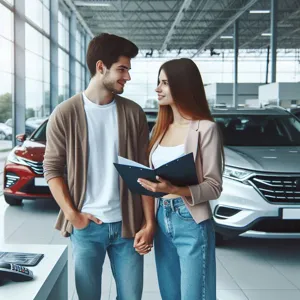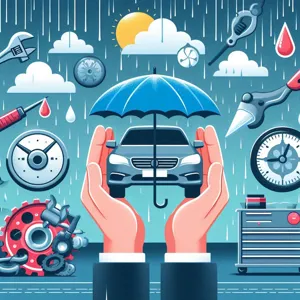In the exhilarating world of first-person shooter (FPS) games, precision and accuracy can be the difference between victory and defeat.
Whether you’re a seasoned sharpshooter or a newcomer looking to level up your gameplay, honing your aiming skills is essential for dominating the competition. With countless hours spent in virtual battlegrounds, many players struggle to find effective methods to enhance their aim. That’s where this guide comes in. We’ll delve into proven techniques and strategies that top gamers use to refine their targeting abilities, from mastering sensitivity settings to employing advanced training exercises. Get ready to unlock your potential and transform your gameplay as we explore the essential skills needed to become a formidable force in any FPS environment!
1. Understanding the Basics of FPS Mechanics

When diving into the world of first-person shooter (FPS) games, having a solid grasp of the fundamental mechanics is crucial for sharpening your aim and enhancing your overall gameplay. FPS games are not just about fast reflexes; they are intricate environments where understanding the underlying principles can dramatically improve your performance.
At the core of FPS mechanics lies the concept of aim sensitivity. This refers to how movement of your mouse or controller affects your crosshair’s movement across the screen. Finding the right sensitivity setting can be a game-changer; too high, and you risk over-aiming, while too low can make it difficult to track fast-moving targets. Experiment with different settings to discover what feels most comfortable for you, often starting with a lower sensitivity and gradually increasing it as you become more confident.
Another essential aspect is recoil control. Each weapon in an FPS game has a unique recoil pattern, and understanding this can significantly enhance your shooting accuracy. Spend some time in the game’s practice mode or training range to learn how different weapons behave when fired continuously. This will help you anticipate and counteract the weapon’s recoil, allowing for tighter shot grouping even in the heat of battle.
Additionally, mastering movement mechanics can greatly influence your aim. Strafing, crouching, and jumping can make you a more elusive target while also improving your shot accuracy. Incorporate these movements into your gameplay. For instance, practice strafe shooting, where you move left and right while maintaining your aim on the target. This not only makes you harder to hit but allows you to make quick adjustments to your aim as you engage enemies.
Lastly, don’t underestimate the importance of map knowledge. Familiarizing yourself with the layout of maps, including choke points and common hiding spots, can give you a tactical advantage. Knowing where to expect enemies will help you position yourself better and improve your reflexes in those critical moments when you need to aim quickly.
By understanding and practicing these basic FPS mechanics, you lay a solid foundation for improving your aim. Remember, consistent practice and a willingness to adapt are key to becoming a sharpshooter in any FPS game.
2. Importance of Sensitivity Settings and DPI
When it comes to honing your aim in first-person shooter (FPS) games, understanding sensitivity settings and DPI (dots per inch) is crucial. These technical aspects might seem daunting at first, but they play a significant role in how precisely you can control your crosshair and respond to in-game movements.
**Sensitivity Settings** dictate how responsive your mouse is to your movements. A lower sensitivity allows for finer control, making it easier to aim accurately at targets, especially at long distances. Conversely, a higher sensitivity can enable quicker turns and faster reactions. However, it’s essential to find a balance. Too high a sensitivity can lead to erratic movements, while too low can hinder your ability to react swiftly to threats. Experimenting with different settings is key; many pro players recommend starting with a sensitivity that allows you to make a full 180-degree turn with a moderate mouse movement distance.
**DPI**, on the other hand, refers to the number of pixels your cursor moves on the screen in relation to the distance you move your mouse. It’s a measure of your mouse’s sensitivity, and it typically ranges from 400 to 8,000 DPI or more. A lower DPI setting, such as 400 or 800, is favored by many competitive players because it grants better precision for aiming. High DPI settings can lead to overshooting your target, making it challenging to maintain accuracy in fast-paced scenarios.
Together, sensitivity settings and DPI create a personalized aiming experience. It’s essential to fine-tune these settings to suit your playstyle. Some players thrive on low sensitivity for pinpoint accuracy, while others excel with higher settings for agility. The key is to practice consistently with your chosen settings until they feel second nature. By understanding and adjusting your sensitivity and DPI, you can elevate your gameplay, ensuring that every shot counts, whether you’re sniping from afar or engaging in close-quarters combat.
3. Setting Up Your Gaming Environment

Creating the right gaming environment is crucial for improving your aim in first-person shooter (FPS) games. The space where you play can significantly affect your performance, so it’s worth investing time and effort into optimizing it. start with your setup: ensure you have a comfortable chair and a desk at the right height to keep your posture in check during those marathon gaming sessions. Your body should be relaxed, allowing you to maintain focus without unnecessary strain.
Next, focus on your monitor placement. Ideally, your screen should be at eye level and roughly an arm’s length away. This allows for better visibility and reduces the chance of neck strain, letting you stay in the zone for longer. A high refresh rate monitor (at least 144Hz) can provide smoother visuals, making it easier to track fast-moving targets and enhancing your overall gaming experience.
Lighting also plays a significant role in your gaming environment. Avoid harsh overhead lights and instead use softer ambient lighting that reduces glare and eye strain. consider using LED strips behind your monitor to create a visually appealing backdrop that won’t distract you from the action on screen.
Don’t overlook the importance of your gaming peripherals. A quality gaming mouse with adjustable DPI settings is essential for precision aiming. Take the time to find a mouse that feels comfortable in your hand and suits your play style. Pair it with a mousepad that offers enough space to maneuver without running out of room during intense firefights.
Lastly, eliminate distractions in your gaming space. Whether it’s noise from other rooms, clutter, or interruptions from family members, creating a focused environment can help you maintain concentration. Consider using noise-canceling headphones to immerse yourself in the game and block out unwanted sounds.
By thoughtfully setting up your gaming environment, you create a space that not only enhances your comfort but also optimizes your focus and reaction time, setting the stage for improved aim and, ultimately, better performance in your favorite FPS games.
4. The Role of Crosshair Customization
When it comes to improving your aim in first-person shooter (FPS) games, one often overlooked yet crucial aspect is crosshair customization. The crosshair is your primary point of focus when aiming, and personalizing it can significantly enhance your precision and comfort during gameplay.
Different players have different preferences, and what works for one might not work for another. The right crosshair can increase your visibility, help you gauge distance, and provide a sense of confidence that translates into better performance. One of the first things to consider is the color of your crosshair. Bright, contrasting colors like neon green or vivid orange can stand out against various backgrounds, ensuring you always know where you’re aiming, even in the midst of chaotic firefights.
Shape and size matter just as much. A thicker crosshair can be easier to see, while a thinner one can provide a more precise aiming point. Some players prefer a static crosshair that stays fixed in the center, while others opt for dynamic options that expand and contract with movement, offering a visual cue of their in-game actions. Experimentation is key here—try out different shapes, sizes, and styles to find what feels best for your playstyle.
Additionally, consider the opacity and outline of your crosshair. A semi-transparent crosshair with a defined outline can provide the best of both worlds, allowing for clear visibility without obstructing your view of the target. Take advantage of the many settings available in-game to create a crosshair that feels uniquely yours.
Ultimately, the goal of crosshair customization is to create a tool that enhances your aim and boosts your gaming confidence. Invest the time to tweak and adjust your crosshair settings until you find the perfect fit. Remember, the right crosshair can be the difference between a missed shot and a well-placed headshot, so don’t underestimate its impact on your overall performance.
5. Practicing Aim with Aim Trainers

When it comes to enhancing your precision and accuracy in first-person shooter (FPS) games, dedicating time to practicing your aim with aim trainers can be a game-changer. Aim trainers are specialized software or applications designed to help players develop their targeting skills through a series of customizable exercises and challenges. These platforms simulate various shooting scenarios, allowing you to refine your reflexes, tracking, and flick shots in a controlled environment.
One of the most notable advantages of using aim trainers is the ability to focus on specific aspects of your aim without the distractions of a traditional gaming setting. You can practice tracking moving targets, improving your flick shots, or honing your reaction time, all while receiving real-time feedback on your performance. Many aim trainers offer a variety of modes and drills, so you can tailor your training sessions to target your unique weaknesses and strengths.
Popular aim trainers, such as Aim Lab and Kovaak’s FPS Aim Trainer, come equipped with a plethora of settings, enabling you to adjust sensitivity, speed, and even the type of weapon you wish to practice with. This level of customization allows you to simulate the feel of your favorite FPS games, making the transition to actual gameplay feel seamless.
Consistency is key when utilizing aim trainers. Just as athletes dedicate hours to perfecting their craft, you should aim to incorporate regular practice sessions into your routine. Whether it’s dedicating 15 minutes a day or longer sessions several times a week, the cumulative effect of focused practice will lead to noticeable improvements in your aim.
Lastly, don’t forget to track your progress. Many aim trainers provide statistics that allow you to measure your improvement over time. By analyzing your scores and identifying trends, you can refine your practice sessions even further, ensuring that each training session is geared toward achieving your personal best.
Incorporating aim trainers into your practice regimen not only sharpens your shooting skills but also builds confidence as you see tangible progress. Embrace the challenge, and watch as your aim transforms from an area of concern into a powerful asset in your FPS gaming arsenal.
6. Utilizing In-Game Training Modes
In the fast-paced world of first-person shooters (FPS), mastering your aim is crucial for success. One of the most effective ways to enhance your aiming skills is by taking full advantage of in-game training modes. These dedicated practice environments are often overlooked, yet they serve as an invaluable tool for players seeking to refine their shooting precision without the pressure of a live match.
Most modern FPS games come equipped with training modes or shooting ranges designed to help players hone their skills. These areas allow you to familiarize yourself with the mechanics of the game, experiment with different weapons, and practice various shooting techniques in a controlled setting. Spend time in these modes to understand weapon recoil patterns, bullet drop, and the nuances of aiming sensitivity settings.
Using the training mode, you can focus on specific aspects of your aim, such as flick shots, tracking moving targets, or mastering headshots. Many games provide a variety of scenarios, from stationary targets to dynamic moving ones that mimic real combat situations. This repetition not only builds muscle memory but also increases your confidence in your abilities when you transition back into competitive matches.
Additionally, many training modes offer a range of tools and settings that allow you to customize your practice experience. You can adjust target speed, distance, and even the number of targets to challenge yourself further. Moreover, some games feature advanced analytics that track your accuracy, reaction time, and overall performance, giving you a clear picture of your progress and areas that need improvement.
Ultimately, incorporating in-game training modes into your regular routine can significantly elevate your aiming skills. By consistently practicing in these specialized environments, you’ll develop the precision and reflexes necessary to outmaneuver your opponents and dominate the battlefield. So, take advantage of these invaluable resources and watch your aim transform from mediocre to exceptional!
7. The Impact of Game Physics on Aim

When it comes to first-person shooters (FPS), understanding the intricacies of game physics can be the difference between landing a headshot and missing your target entirely. Game physics refers to the simulated real-world interactions that dictate how objects move and behave within the game environment. This includes everything from bullet drop and travel time to player movement speed and weapon recoil.
Let’s break it down: in many FPS games, the bullets don’t just travel in a straight line indefinitely. Instead, they may have a certain range before they start to drop due to gravity or may exhibit a delay based on the distance to the target. For example, in games like “Battlefield” or “Call of Duty,” players must account for bullet drop when aiming at long-range targets. Learning to compensate for this can significantly enhance your accuracy, but it requires practice and a keen understanding of each weapon’s ballistic properties.
Furthermore, weapon recoil can greatly affect your aim. Each gun behaves differently, with some producing a significant upward or sideways kick after firing. Understanding the recoil pattern of your preferred weapons allows you to counteract this movement effectively. For instance, mastering “resetting” your aim after a shot and adjusting your crosshair position can lead to more consistent hits, especially in rapid-fire scenarios.
Additionally, player movement plays a crucial role in aiming. The physics of how your character moves—whether sprinting, crouching, or jumping—can affect your accuracy. Many games impose a penalty on accuracy when you’re on the move, meaning that standing still gives you a more stable aim. Learning to time your shots and position yourself strategically can help mitigate these effects, enabling you to deliver precise fire even in hectic firefights.
By immersing yourself in the nuances of game physics, you can develop a more intuitive understanding of how to aim effectively. Take the time to experiment with different weapons and practice in various scenarios, and soon you’ll see a marked improvement in your accuracy and overall gameplay. Remember, the key to mastering your aim is not just about reflexes—it’s about leveraging the game’s mechanics to your advantage.
8. Techniques for Tracking and Flick Shots
When it comes to mastering aim in FPS games, tracking and flick shots are two indispensable skills that can significantly enhance your gameplay. These techniques require precision and practice, and developing them can turn you into a formidable opponent on the battlefield.
**Tracking Shots** involve following a moving target with your crosshair, allowing you to maintain accuracy as you shoot. The key to effective tracking is to keep your movements smooth and controlled. Start by adjusting your sensitivity settings—too high, and you’ll struggle to keep up; too low, and you’ll find it difficult to react swiftly. Spend time in aim training maps or dedicated software like Aim Lab or Kovaak’s, where you can practice tracking moving targets. Focus on predicting your target’s movements: anticipate where they will be rather than where they currently are. This strategic foresight will help you land shots more consistently.
On the other hand, **Flick Shots** are all about speed and precision. This technique is often used when you need to quickly adjust your aim to hit a target that appears unexpectedly. To improve your flick shots, practice your hand-eye coordination and reflexes. Start with stationary targets, then gradually increase the difficulty by introducing moving targets or switching between multiple targets in quick succession. Utilizing a training tool can help in enhancing your flick accuracy by allowing you to fine-tune your reaction time.
A combination of these skills can be developed through regular practice, but don’t forget the importance of warm-ups. Before diving into competitive matches, take a few minutes to engage in aim drills that focus on both tracking and flicking. This will not only help you get into the right mindset but also sharpen your reflexes for the challenges ahead.
With dedication and consistent practice, you’ll soon find your tracking and flick shots becoming more instinctual, allowing you to dominate your opponents and climb the ranks in your favorite FPS games. Remember, improvement takes time, so be patient with yourself and enjoy the journey of sharpening your skills!
9. Developing Muscle Memory through Repetition
Developing muscle memory through repetition is a cornerstone technique for improving your aim in first-person shooter (FPS) games. At its core, muscle memory refers to the subconscious ability to perform actions automatically, allowing you to focus on strategy and in-game awareness rather than the mechanics of aiming itself. This transformation relies heavily on consistent practice and dedicated playtime.
To cultivate muscle memory, you should engage in regular, focused training sessions that prioritize aiming drills. Start by selecting a few key exercises that target different aspects of aiming, such as tracking, flick shots, and target precision. Popular aim trainers like Aim Lab or Kovaak’s FPS Aim Trainer offer customizable drills that can help you hone your skills. Alternatively, many FPS games provide practice ranges or custom lobbies where you can work on your aim without the pressures of competition.
Consistency is vital; it’s better to practice for shorter periods daily than to cram long sessions infrequently. Aim for 20-30 minutes of targeted practice each day, focusing on your weaknesses and gradually increasing the difficulty as you improve. As you repeat these exercises, the neural pathways in your brain strengthen, leading to faster reflexes and smoother movements.
Additionally, consider varying your practice routines to avoid stagnation. Incorporate different weapons or playstyles to challenge your adaptability and reinforce your muscle memory in diverse scenarios. Over time, you will find that your aim becomes more instinctive, allowing you to respond quickly and accurately in high-stakes situations. Remember, the key to mastering aim in FPS games lies not just in the quantity of practice, but in the quality—so commit to your drills, be patient with your progress, and watch your skills sharpen over time.
10. Analyzing Gameplay with Replays
Analyzing gameplay with replays is an often overlooked yet incredibly powerful technique for improving your aim in first-person shooter (FPS) games. Watching your own gameplay can open your eyes to mistakes you might not have realized you were making in the heat of battle. By reviewing your replays, you can identify patterns in your performance, spot weaknesses in your aiming technique, and even recognize bad habits that have crept into your gameplay.
Start by recording your matches, whether you’re using built-in game features or external software. Once you have a collection of your gameplay footage, set aside some time to sit down and watch your replays with a critical eye. Pay close attention to your crosshair placement, reaction times, and decision-making processes. Are you consistently aiming too high or too low? Do you tend to panic and spray your shots when under fire? These insights can help you formulate a targeted practice plan.
Additionally, consider comparing your gameplay to that of top players. Many games allow you to watch professional matches or high-ranked players’ replays. Observe their aiming techniques, movement patterns, and how they position themselves in various scenarios. Take notes on their strategies and integrate those elements into your own playstyle.
Finally, don’t forget to take advantage of community resources. Many FPS games have forums or video channels dedicated to gameplay analysis where experienced players dissect their own matches or those of others. Engaging with these resources can provide new perspectives and tips for refining your aim.
Incorporating replay analysis into your training routine is not just about critiquing your performance; it’s a pathway to understanding and mastering the intricacies of aiming in FPS games. By taking the time to learn from your past experiences, you’ll be well on your way to becoming a sharper, more precise shooter.
11. The Importance of Warm-Up Routines
Just like athletes need to warm up before a game, gamers can benefit immensely from a solid warm-up routine before diving into intense matches. The importance of warm-up routines in first-person shooter (FPS) games cannot be overstated. Warming up not only prepares your hand-eye coordination but also helps sharpen your reflexes, ensuring that you’re firing on all cylinders when it’s time to engage in competitive play.
A well-structured warm-up session allows you to gradually acclimate to the game’s mechanics and controls. Begin with a few minutes of aim training in a dedicated practice mode or through aim trainers like Aim Lab or Kovaak’s. Focus on tracking, flick shots, and precision aiming. This targeted practice helps you identify any areas that need improvement while also reinforcing muscle memory.
Incorporate drills that simulate real match scenarios, such as flicking to targets at varying distances and speeds. Spend time in deathmatch or free-for-all modes to further immerse yourself in the game’s environment. This not only helps you get used to the feel of your character but also allows you to experiment with different weapons or sensitivity settings.
Moreover, a warm-up routine serves as a mental preparation tool. It helps you shift your focus from the distractions of daily life back to the game, sharpening your concentration and boosting your confidence. As you go through these motions, you become more attuned to the nuances of the game, allowing you to react more instinctively during high-pressure situations.
Remember, the aim isn’t just to knock off a few shots but to cultivate a mindset of improvement. The more consistently you incorporate a warm-up routine into your gaming sessions, the more fluid and precise your gameplay will become. So, before you hit that ‘join match’ button, take the time to warm up—your future self will thank you when you find yourself racking up those headshots.
12. Staying Calm: Mental Strategies for Better Focus
In the high-stakes world of first-person shooters, maintaining composure under pressure can be the difference between victory and defeat. Staying calm is not just about keeping your cool; it’s about harnessing mental strategies that enhance your focus and precision. When the bullets start flying, and the chaos unfolds, your ability to think clearly can significantly impact your aim and overall gameplay.
One effective technique is to practice controlled breathing. Inhale deeply through your nose for a count of four, hold for another four, and exhale slowly through your mouth for a count of six. This simple exercise can help lower your heart rate, reduce anxiety, and reset your focus, allowing you to approach each engagement with a clearer mind. Incorporate this breathing technique into your pre-game routine or during moments of high tension in matches.
Visualization is another powerful tool in your mental arsenal. Before you even pick up the controller, take a moment to visualize your gameplay. Picture yourself navigating the map, making precise shots, and successfully outmaneuvering opponents. This mental rehearsal not only boosts your confidence but also prepares your brain for the actions you intend to take during actual gameplay.
Moreover, developing a pre-game ritual can help you enter a focused mindset. Whether it’s listening to a particular playlist, engaging in light stretching, or reviewing your game strategies, having a consistent routine signals to your brain that it’s time to perform. When your mind is in the right space, you’re more likely to react swiftly and accurately, leading to improved aiming and gameplay performance.
Lastly, don’t underestimate the power of positive self-talk. Replace negative thoughts with affirmations that reinforce your skills and capabilities. Phrases like “I am focused” or “I can hit my target” can boost your confidence and redirect your mindset during intense moments. Remember, the mental aspect of gaming is just as crucial as your physical skills, and by cultivating a calm and focused state of mind, you’ll unlock greater potential in your aim and overall gameplay.
13. Joining Community Drills and Scrims
Joining community drills and scrims can be a game-changer when it comes to honing your aim and overall gameplay in first-person shooter (FPS) games. These organized sessions create a unique opportunity for players of all skill levels to come together, practice, and learn from one another in a structured environment. Whether you’re a casual gamer or an aspiring pro, participating in these activities can significantly enhance your skills.
Community drills often focus on specific mechanics, such as flick shots, tracking, and crosshair placement, allowing you to refine your technique in a supportive setting. These drills are typically led by more experienced players or coaches who provide valuable insights and tips tailored to your current level. Beyond just improving your aim, you’ll also learn about game sense, positioning, and teamwork—essential components of successful FPS gameplay.
Scrims, or scrimmages, take things a step further by simulating competitive matches against other teams or groups. This is where you can truly test your aim under pressure, as every shot counts. Playing against real opponents challenges you to adapt quickly, analyze your performance, and identify areas for improvement. The feedback you receive from teammates and opponents alike can be instrumental in your development, helping you to understand not just how to hit your shots, but when and why to take those shots.
Moreover, these community engagements foster a sense of camaraderie and accountability among players. You’re not just practicing alone; you’re part of a larger network of gamers who share your passion for improvement. You’ll find encouragement, motivation, and sometimes even friendly rivalry that keeps you coming back for more.
As you immerse yourself in these drills and scrims, remember to focus on the fundamentals. Consistency is key in building muscle memory, so pay attention to your aim, practice regularly, and don’t hesitate to ask for feedback. Over time, you’ll notice a marked improvement in your aim, confidence, and overall performance in FPS games. So grab your gear, join a community, and start shooting for success!
14. Regularly Reviewing and Adjusting Your Techniques
Improving your aim in first-person shooter (FPS) games isn’t a one-and-done task; it’s a continuous journey that requires regular review and adjustment of your techniques. Just as professional athletes analyze their performance after each game, you too should take the time to assess your gameplay. This practice not only helps identify areas needing improvement but also allows you to refine what’s already working well.
Start by recording your gameplay sessions. Watching your own clips can provide invaluable insights into your aiming habits, movement patterns, and decision-making processes. Pay close attention to moments where you missed shots or found yourself outmaneuvered by opponents. Consider asking yourself questions like: Were you too aggressive? Did you panic when the enemy appeared? Or did your crosshair placement need adjustment?
In addition, seek feedback from peers or more experienced players. Engaging in discussions about techniques and strategies can unveil new perspectives and tips that you might not have considered. Many gaming communities and forums offer spaces for sharing gameplay footage and constructive criticism, which can be instrumental for growth.
Furthermore, don’t hesitate to revisit training drills and aim trainers. As you improve, the exercises that once challenged you may become too easy, so it’s important to continuously raise the bar. Explore different drills that focus on various aspects of aiming, such as flick shots, tracking, and target switching. Each session should feel like a mini-assessment where you actively reflect on your progress.
Lastly, embrace the evolution of your gameplay. As you become more adept, your techniques and strategies may need to adapt to your changing skills and the dynamics of the game. Regularly reviewing and adjusting your techniques ensures that you remain sharp, competitive, and ready to conquer your opponents. Keep an open mind, stay committed to self-improvement, and watch as your aim—and overall gameplay—soars to new heights.
15. Conclusion: Consistency is Key to Improvement
In the world of first-person shooters (FPS), the quest for accuracy and precision often feels like an endless journey. However, as we’ve explored throughout this guide, the secret to leveling up your aim lies not just in the techniques you employ but in the consistency with which you practice them. Improvement in FPS games is not an overnight phenomenon; it’s a gradual process that demands dedication and perseverance.
Every time you log in to play, view it as an opportunity to refine your skills. Whether it’s dedicating a few minutes to aim training drills, experimenting with different sensitivity settings, or analyzing your gameplay to identify weaknesses, each effort compounds over time. Create a structured practice routine that integrates both fun and focused exercises, ensuring you remain engaged while making tangible progress.
Moreover, consistency extends beyond your practice sessions. Apply what you learn in real games, even in casual matches, to build muscle memory and improve your reaction times under pressure. Remember, every shot you take, whether it lands or misses, contributes to your growth as a player.
Lastly, be patient with yourself. Just as a skilled marksman perfects their craft through countless hours of practice, so too will you see your aim improve with time and effort. Embrace the process, stay committed, and watch as your skills sharpen and your confidence soars. Consistency, after all, is the cornerstone of mastery, and with it, you’ll not only enhance your aim but also elevate your overall gaming experience. Happy shooting!
In conclusion, elevating your aim in FPS games is not just about quick reflexes but a combination of practice, technique, and the right mindset. By incorporating the proven strategies outlined in this post—ranging from sensitivity adjustments to specific training drills—you can refine your skills and see significant improvements in your accuracy and performance. Remember, consistency is key; the more you practice these techniques, the more natural they will become. So gear up, implement these tips, and get ready to dominate your next match! Your journey to becoming a sharpshooter starts now, and we can’t wait to hear about your victories in the gaming arena. Happy gaming!




































